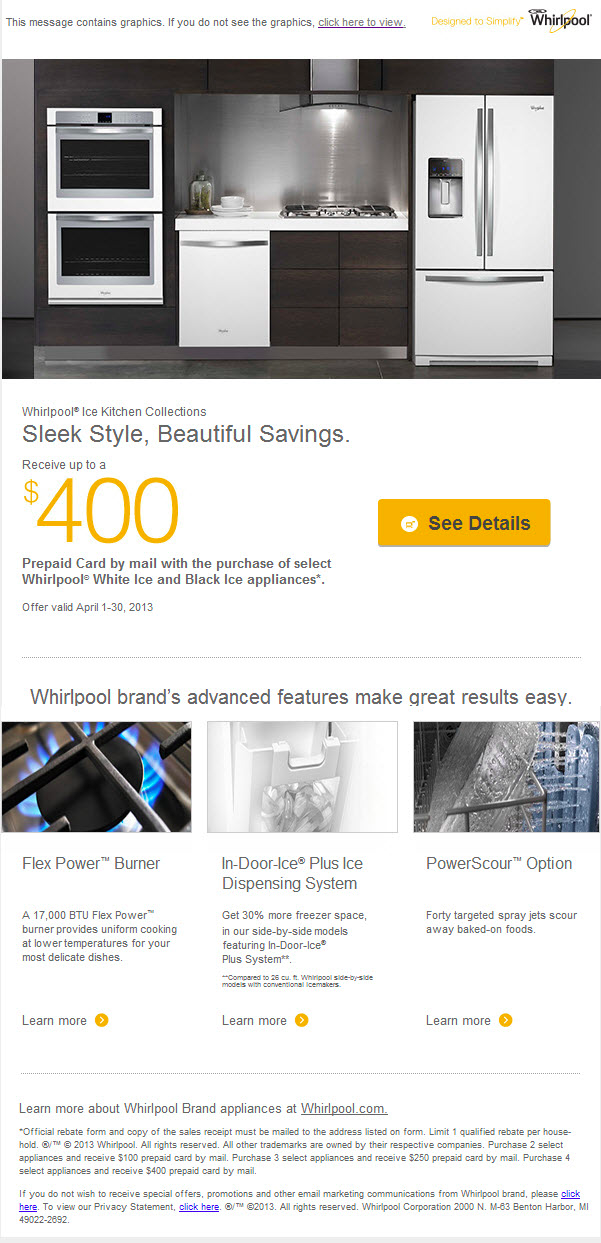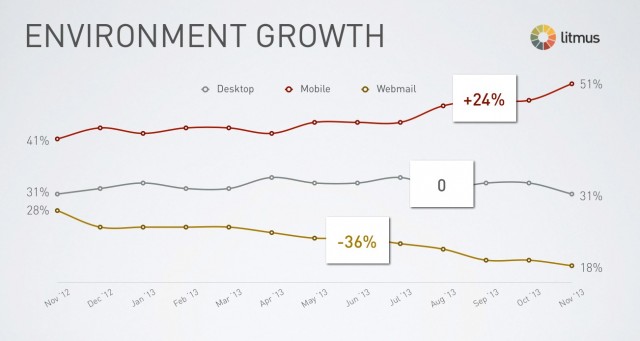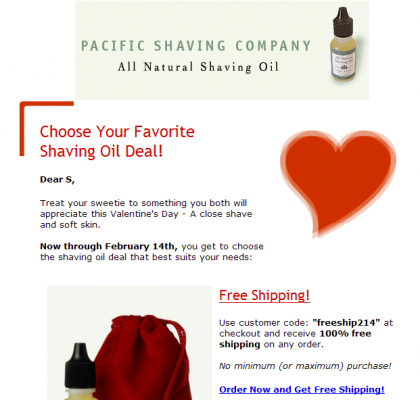8 Ways To Keep Your Email Engagement Alive & Lucrative

According to digital marketing firm Lyris, you should expect to lose 30% of your email subscribers every year.
The two main reasons behind losing subscribers are:
- They change their email address.
- Your content is no longer relevant to them, so they stop opening your email or they unsubscribe.
The first case is just your bad luck. Perhaps the subscriber was using their work address and got a new job, or they got bored with their username and got a new one. Not much you can do about that.
But, you do have control over email engagement & how relevant your content is.
Cassie Lancellotti-Young – VP of Client Optimization for Email service provider Sailthru.com – says their data shows email engagement is mission critical in the first 30 days. That’s when subscribers learn if your email strategy aligns with their expectations & decide if you’re really worth their time.
If they’re not opening your emails or clicking your links or are unsubscribing at rates that are alarmingly higher than industry standards – your strategy needs work.
Because of this, Sailthru recommends developing a compelling customer onboarding series within those first 30 days, and aim keep unsubscribes under 3%.
In this article, we’ll discuss a 3-step framework and 5 strategies to help you keep email engagement up in those first 30 days and beyond.
Along the way, we’ll explore research and relevant case studies to help you get those hard-earned leads back into your marketing funnel.
Let’s get started.
Step 1 – Simplify Your Entire Email Messaging
Let’s start by considering this Princeton study titled “Decision Making and Avoidance of Cognitive Demand” that confirms people are inherently lazy: we have a tendency to choose the action that requires the least energy.
How does this relate to your emails?
Nowadays, the inbox is a very crowded place. In a “limited & biased toward gMail” study on PandoDaily an analysis of 38,000 inboxes found that 30% of people have between 10k – 21k emails in their inboxes.
That requires a lot of attention to manage. So know that when your reader opens your email, they’re already suffering from some degree of email fatigue.
Therefore, if your email:
- is written in a small font
- does not follow common readability best practices
- presents the reader with multiple, equally-weighted calls-to-action
…the action that requires the least energy is to ignore your email.
Let’s see this in practice.
In this case study from MarketingSherpa, we find that Whirlpool was able to increase their click-through rate by 42% by simplifying their email.
They went from this, an email with 4 calls-to-action:
To this, with one:
By reducing the amount of competing calls-to-action, Whirlpool was able to focus subscriber’s attention & squeeze more results out of the same email.
Also consider: today, 2 out of 3 emails are first opened on a mobile device & 63% of all decision makers check their email on their phone. Also, as of December 13th 2013, mobile email opens surpassed the desktop for opens.
Simpler emails are more suited to the smaller screen sizes of mobile devices. You can no longer assume that everyone is using a desktop computer.
Sidenote: Research from Litmus also shows that 97% of people read emails only once & on a single device.
If 2/3rds of people are opening on mobile & your email strategy is grounded in people reading free content (like this article) wouldn’t that mean the phone isn’t necessarily the best device for article consumption?
Increase the chances of your mobile email openers to return to your content by including a “read later” icon like Instapaper or Pocket.
Recalling that people are inherently lazy, simplify your emails by reducing everything down to the absolute essentials – including an easy way to come back to the content later if they want to.
Step 2 – Create Targeted Segments Around Individual Experiences
A few years ago, CRM enjoyed a brief moment in the spotlight when a father revealed that Target knew his daughter was pregnant before he did:
Let’s put the alarmist tone aside for a moment and put on our marketing hats: this is Target putting segmentation to work.
Let’s also view it from the customers’ perspective: imagine yourself as someone who is newly pregnant.
You need pregnancy products. Target sends you a package with coupons for the pregnancy products that you need. Is that relevant? Does it align with your interests? Do you open the package?
People have different expectations based on the relationship they have with your product, so when your list is big enough, you should tailor your communications accordingly. Some ideas:
- Send exclusive content to big spenders
- Send offers related to previous purchase history
- Send discounts and coupons to people who haven’t purchased anything (but actively browse the site)
- Send demographic-appropriate content
- Create segment for inactive subscribers
While it can be time-consuming to set up segments, doing it successfully means that you’ll enjoy a metrics boost across the board:
To see this in action, let’s look at SwayChic who created multiple segments & increased average open rates by 40%.
To find one of their first segments, they analyzed their email data and noticed they received the most opens at:
- 5am
- 10am
- 10pm
They also also started to see positive correlations between sales data and day of the week.
So, they did what any smart email marketer would do; they developed a campaign to send emails when subscribers were already on & more likely to buy.
This of course, resulted in better inbox visibility & a significant increase in clicks and sales (more on that in a bit)
Other segments SwayChic created were for inactive email subscribers…
… frequent buyers…
…and first time buyers
Overall, the campaign consisted of 12 optimized email campaigns/month and resulted in:
- Increased average open rate by 40%
- Doubled average click-through
- Tripled revenue for each campaign
Read the full case study here.
Read 27 different ways to segment your email list here.
Step 3 – Optimize Your Email Strategy Based On Behavior
First, understand that there’s no one perfect time to send email.
Every email list is different, so be wary of using other peoples’ data to plot your strategy. You can, however, use your own data to make educated decisions about when to send.
Take this graph of “open times” for example. It’s fairly obvious that 4pm, 9am and 8pm are prime times for emailing people on this list.
This is why it always comes back to knowing your customers. Let’s say you run site that caters to business women with young children.
Instead of saying “Send to them all at 9am because studies show that’s the best time to mail!”, you’d say:
“This segment is mostly American working mothers who have 2 school-age kids, so their mornings are probably spent driving their kids to school then hurriedly getting to the office.
They already have high stress levels when they get into the office and have work emails to attend to. However, they’ve got a few minutes to themselves after lunch. I’ll test sending my email at 1230pm EST.”
In a “send time” experiment by MECLABS last year, they A/B tested which time of day would get the most response from a finance client’s email list.
They hypothesized that sending at 3:00am would be effective because it was taking advantage of being first in the inbox whereas sending at 3:00pm subscribers would be deep in the “work” mindset.
Everything about the AM & PM emails for each day, except the time of day they were sent. What they found was that the 3:00pm email consistently outperformed the early morning email.
For more in-depth detail on this experiment, go here.
Here are a few more strategies to consider when creating segments to keep your lists active.
1. Test Sending Immediately After They Subscribe
Lumosity observed their conversion rates as they tested two email cases: the first, where they sent an email on the same day as registration; the second, where they scheduled the emails for Tuesdays or Thursdays – days commonly tagged as the best days to send emails.
Lumosity reported that conversions “increased significantly,” while site usage jumped 81% when they sent immediately after signup.
This “I want it now” behavior is reflected in a lead contact by phone analysis done by InsideSales that found response time to phone calls drops dramatically between the 5-10 minute mark.
Could it be that when someone signs up by email, they’re signaling they want something right away?
If we promise & deliver instant gratification on our email optins, might we also see a boost in responsiveness? The data seems to indicate “yes”
2. Personalize Content Based On Usage History
If you’re a CXL reader, I imagine you’re probably already using at least some of the basic email segmentation tactics we’ve already talked about (big spenders, unengaged, etc)
But did you know that new research by Temple’s Fox school of business shows that the most effective kind of segmentation is based on behavior?
“(The study) also found that product personalization, in which customers are directed to products that their past purchasing patterns suggest they will like, triggered positive responses in 98 percent of customers.”
Spotify, for example, does this whenever someone adds music to a playlist you follow, or when an artist you like adds new music to the service.
Modcloth does this by letting you know items in your abandoned cart are nearly out of stock.
Some other ways you could easily implement personalization is to create segments based on:
- item links clicked
- items purchased
- usage of coupons or sales vs full price shopping
Some services you can use for these kinds of transactional email are Mandrill, Sendgrid, or Mailgun. This feature chart on SocialCompare should help you compare these three & others to find the features that are best for you.
3. Separate Work Emails From Personal Emails & Experiment With Send Times
Do This: Segment your list into corporate and personal domains (Gmail, Yahoo, etc).
Now, experiment with sending to the corporate domains during business hours and personal domains on weekends and non-work hours.
Pacific Shaving Company tried this stagger strategy for their Christmas and Valentines campaigns and saw tremendous results in their conversion rates: 87% and 58%, respectively.
This can be extremely effective if you’re respecting the environment your subscriber is in when they receive the message.
Moreover, separating your “business” clients from your “consumer” clients can help you to identify even more profitable segments (or partnerships) further down the road.
Imagine how much more effective an email like the one below could be if it were sent only to branded email addresses.
4. “Re-activate” Inactive Email Subscribers Then Clear Out Non-Responders
Earlier, we talked about SwayChic’s reactivation campaign and how it contributed to 40% increase in overall opens, but what impact does reactivation have on revenue?
According to this excellent white paper on reactivation campaigns, Experian found that a “thoughtfully planned” re-activation strategy could deliver up to 14x email revenue.
They also found that the costs associated with re-activating customers were significantly lower than acquiring new ones, making the margins on a reactivation significantly higher.
What about the customers who don’t reactivate?
Ask them to unsubscribe. Though it may seem counter-intuitive, your open rates will be higher, you click through rates will be higher & your marketing metrics will be more reflective of your efforts. Not to mention you won’t be paying for people who won’t actually convert to buyers.
5. Consider Switching Your Email Marketing Provider
Choosing a vendor that’s a good fit allows you to focus more on your content, resulting in higher-quality emails that drive results.
How do you know it’s time to consider switching?
You spend too much time trying to use it
You need functions they don’t offer, or it’s a pain to use the functions you need. For example, scheduling and staggering emails is incredibly easy for some vendors, and incredibly difficult in others.
You have outgrown “standard” email marketing solutions
Your segments are getting out of control, or you have the problem of having “too many” leads. In this case, you’ll want to look into marketing automation software like Hubspot, Infusionsoft, Eloqua or Marketo.
Don’t be complacent, always look at the best fit for your needs.
Conclusion -To Keep Your List From Shrinking, Always Be Testing
The inbox is becoming a very competitive place, so it’s critical that you’re making the most out of those few precious seconds your readers see your email.
How do you keep your list from shrinking?
As we’ve seen from the above examples, successful companies take the time to deeply understand their customers’ behavior. Armed with that knowledge, they then constantly run experiments to improve their email metrics.
Always test and get your own data. It’s useful to use frameworks such as these and look at results from other companies, but treat them as a general guideline. Your list will have its own unique characteristics that you can use to your advantage.



















